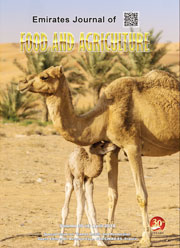GROWTH AND YIELD OF THREE SUNFLOWER HYBRIDS CULTIVATED FOR TWO YEARS UNDER MEDITERRANEAN CONDITIONS
DOI:
https://doi.org/10.9755/ejfa.2015-05-291Keywords:
Sunflower, High-oleic hybrid, Seed oil yieldAbstract
Sunflower (Helianthus annuus L.) is globally one of the most important oil crops, lately expanding in more semi-arid Mediterranean regions. A 2-years field study was conducted to evaluate growth, grain and oil productivity of three sunflower hybrids (PR64E83, Oleko and PR63A90). Plant height, number of green leaves, weight of 1000-grains and grain number were significantly affected by the interaction of year and sunflower hybrid. Grain yield resulted to differences ranged among 13 and 34 % between the two years. In 2009, Oleko and PR63A90 were the most productive hybrids regarding seed (8210 and 7500 kg/ha, respectively) and oil (2960 and 2950 kg ha-1, respectively), while PR63A90 was the significantly more productive hybrid during the second year (2010). Hybrids such as Oleko seem ideal for high grain and oil yield (with a high concentration of monounsaturated fatty acids); however they fit better to a crop rotation, probably due to a high phytotoxicity of their residues which reduces the yield of the second year. On the contrary, the ability of some non high-oleic hybrids such as PR63A90 to keep high grain yield even in the second year of their cultivation in the same field is clearly a very desirable trait and it should be further tested, since it can result to very high oil yield.










 .
. 